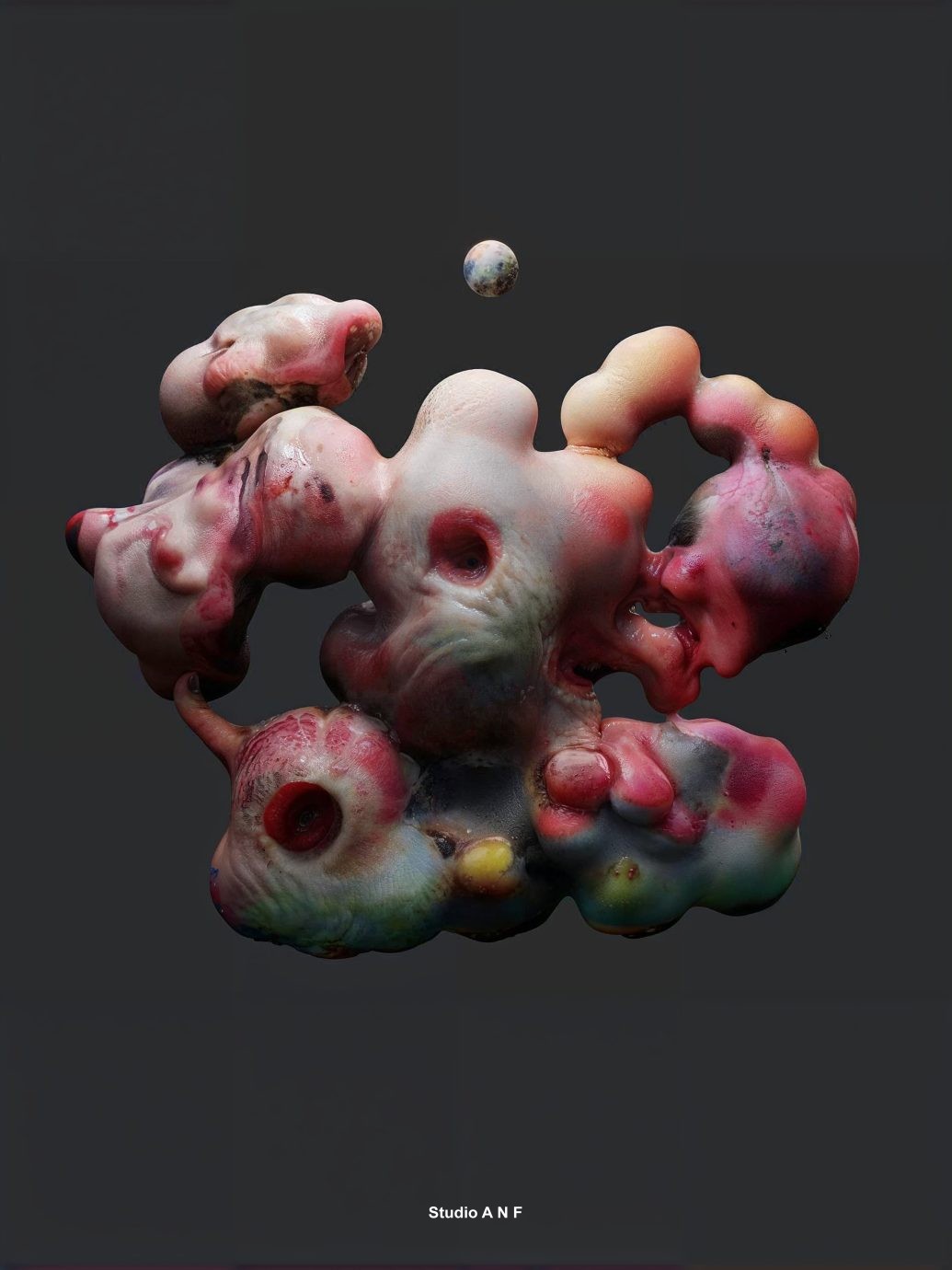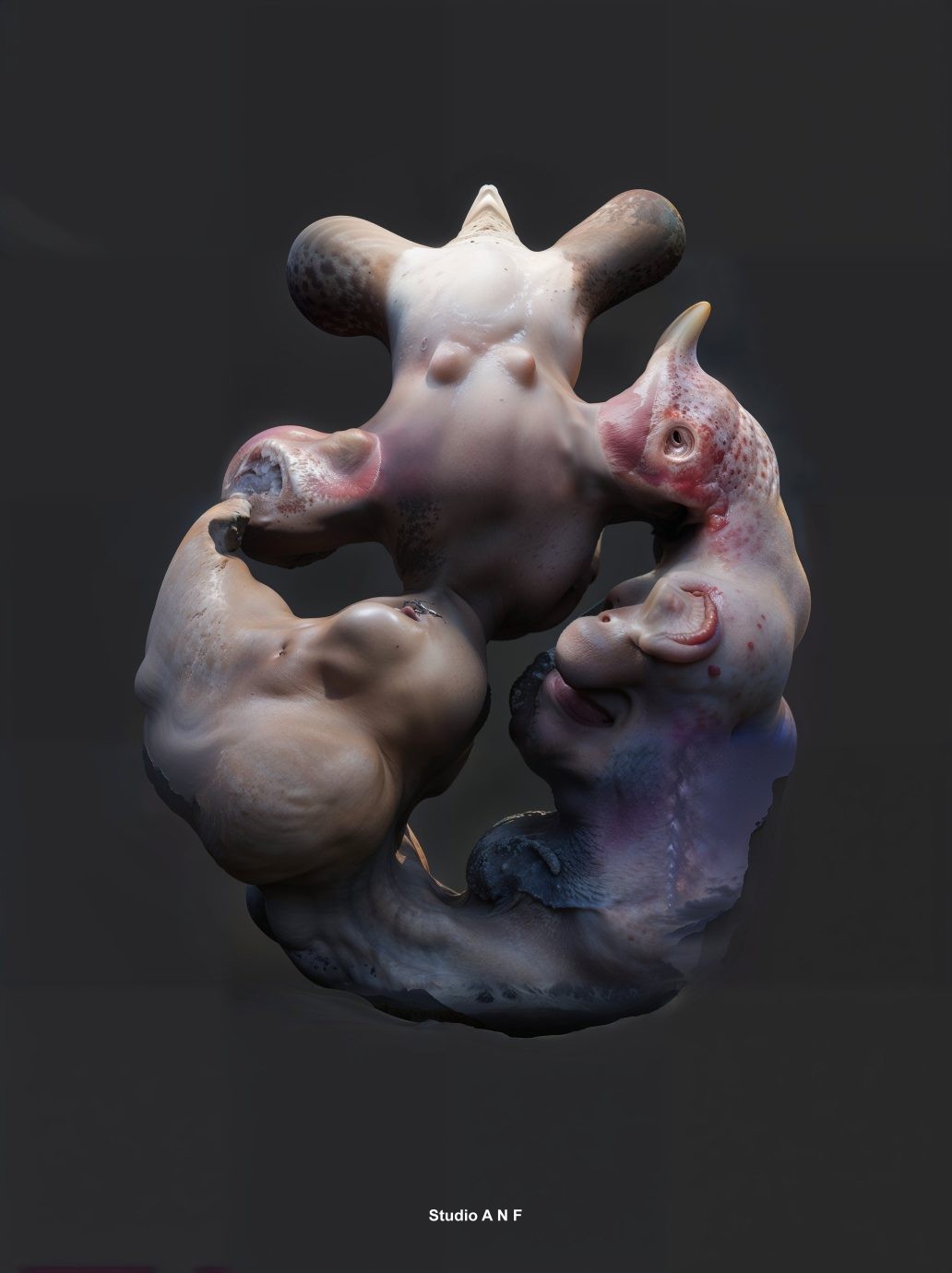

Work from the wretched year of twenty twenty, the beginning of the downfall of all civilization on planet earth. Artificial intelligence and Neural Networks were once again recruited as generative tools to create interesting and evocative shapes. Then even more neural networks competed against each other to increase depth and detail in the 2d textures, which were then mapped to roughly modelled 3d shapes. We bow down to our new machine overlords – as we always have and always will.

Artificial intelligence is reshaping the frontier of sculpture, introducing a novel category of art known as AI-generated sculptures. This intersection of technology and creativity leverages AI algorithms to conceive and construct three-dimensional artworks, offering a new perspective on the creative capabilities of machines.
AI-generated sculptures stir debate around creativity, authorship, and the essence of art. Critics question the emotional depth of AI-created works, while supporters view AI as an extension of traditional artistic tools, pushing the boundaries of crativity. These sculptures also challenge notions of originality, as AI can generate countless variations on a theme, complicating concepts of uniqueness and copyright in art.
The evolution of AI suggests more intricate and interactive sculptures ahead. Incorporating real-time data could lead to pieces that evolve with environmental changes or audience interactions, blurring the lines between art, viewer, and context. Additionally, merging AI art with virtual and augmented reality technologies promises new experiential dimensions, allowing for immersive encounters with art that transcend physical space.
The rise of AI in sculpture prompts ethical questions about creativity’s nature and the implications of using AI to produce art that may infringe on existing copyrights or dilute the human touch in creativity. These concerns underline the need for ongoing dialogue about the role and regulation of AI in the art world.
AI-generated sculptures represent a dynamic fusion of AI technology and artistic exploration. While they challenge conventional views on art and creativity, they also open up unprecedented possibilities for innovation and expression in sculpture. As AI technology advances, it promises to further expand the horizons of what can be imagined and created, inviting both artists and audiences to rethink the essence and potential of art in the digital age.